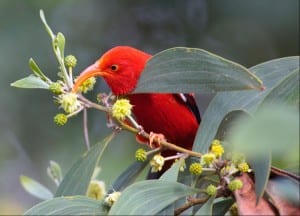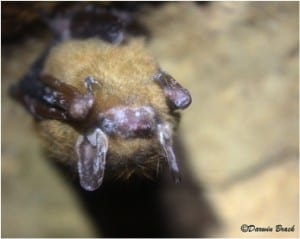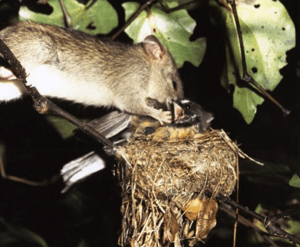Work Group 2: Solving the Fungal Crisis
Problem
Fungal diseases are an emerging problem worldwide for plants, animals, and humans. Fungal diseases destroy staple food crops, like rice and wheat, threaten food security and are serious threats to many wild species. The American Chestnut tree, once an icon of the Eastern US, essentially disappeared from the landscape following the introduction of a fungus to North America. Another fungus has caused extinction of more than 120 amphibian species in little over a decade.
More recently, a fungus introduced to North America has caused the most precipitous decline in mammals ever recorded. This fungus, Pseudogymnoascus destructans, infects bats during hibernation causing a disease called white-nose syndrome. Infected bat populations of several species have declined over 90% and a few species may become regionally extirpated or extinct in the next decade.
We currently have no effective and scalable solutions for white-nose syndrome or most other fungal diseases that threaten food security, human health, and global biodiversity.
We aim to tackle this problem using new genomic approaches and focus on bat white-nose syndrome as a model disease representing the global fungal crisis.
Solution
Our solution focuses on the fungal pathogen. P. destructans is an invasive species to North America, its genome is sequenced, and it can be easily grown in the laboratory. These characteristics make it a good target for intervention. Our approach blends new genomic technologies with established ecological principles. We will aim to weaken the fungus, not eliminate it. This will allow the fungus to persist in the environment and on bats, but will reduce the pathogenic potential and mortality rate in bats.
We will accomplish our objective using two strategies to reduce the virulence of P. destructans. One strategy will be genetically based and involve identifying less virulent strains of the fungus. These may be naturally occurring isolates or isolates genetically modified using RNAi or CRISPR. The other strategy will involve identifying or genetically engineering a virus that can infect the fungus (a mycovirus) and cause reduced fitness or virulence. The resulting isolates will be screened for virulence in the laboratory using a waxworm model and bat tissue explants. From these tests, we will identify candidate strains for testing on hibernating bats in controlled laboratory infection trials. All safety testing and assessment of effects on non-target species will be completed at this stage. Based on the results of these experiments, the less virulent strains (either genetically-based or viral-mediated) will then be deployed at select hibernation sites for initial field-testing. Fungal loads in the environment, intensity of infection in bats, and severity of white-nose syndrome will be monitored over the duration of the field trial using established tools and methods. This information will be used to assess and refine our initial approach.
Our approach is unique in that it leaves space for the fungus to survive and allows for co-existence with bats and other organisms within cave ecosystems. Animals and plants have been living with fungi for thousands of years and there is a strong selection pressure for more peaceful coexistence. By reducing virulence of the fungus, we may help facilitate natural evolution of resistance in bats to this disease. Additionally, this approach is consistent with modern evolutionary medicine.
The Current Landscape
Controlling disease in free-ranging wildlife populations is challenging and tools to effectively combat fungal diseases are extremely limited. This is true across species, including humans. Chemotherapeutics and bio-control agents are currently being tested for treatment of white-nose syndrome in bats. But, all of these treatments are labor intensive, temporary fixes with questionable long-term utility.
Genomic tools have been successfully used against fungal disease of plants and may soon allow for restoration of the American Chestnut to our backyards and forests across the eastern US. So this approach has precedence in other species, but has not yet been applied to fungal diseases of animals, such as white-nose syndrome.
Response to white-nose syndrome is strongly supported by a coordinated, international framework that includes Federal agencies in the US, Canada, and Mexico, state and provincial agencies, and a broad network of academic institutions and NGOs. All stakeholders have been actively engaged in response to this epidemic and are driving the research forward. The research that has been completed over the past seven years has led us to this point. As a community, we are ready to develop and deploy treatments for this disease to protect bats across North America…and time is running out.
We need an effective, scalable, long-term solution. We think our approach is that solution. Additionally, the tools and methods we develop for combating white-nose syndrome will likely have broader applications for other species threatened by fungal diseases worldwide, including humans.
The Stakeholders
Our solution will save millions of bats across North America. Bats are keystone species for cave ecosystems and provide important ecological services. Bats are voracious insect predators; a single bat can consume up to 5,000 insects a night. This pest control service translates to $25 billion savings annually for US agriculture.
The solution we propose would provide valuable tools for federal and state land management agencies and conservation NGOs. These groups are eager for solutions that will help them protect and conserve important bat populations.
The tools we develop for white-nose syndrome may be translated to treating fungal infections in other species. This will broaden our market and opportunities to have substantial impacts on global biodiversity, food security, and human health.
Risks
We acknowledge there are risks in our approach. Ecologically, this fungus is invasive and has no established niche in the ecosystem of North America. So, altering the fungus is unlikely to have substantial ecological impacts.
There are technical challenges inherent in identifying or creating an effectively less virulent strain of the fungus. However, our multi-pronged approach will help protect against this risk and improve chances of finding one or more potential solutions.
A delay in regulatory approval for deployment of our solution would reduce our ability to protect bat populations from this disease. White-nose syndrome continues to spread across North America with new states confirmed with the disease every year – we don’t have much time. Through the White-nose Syndrome National Response Framework we have created a partnership with regulatory agencies and are prepared to address treatment options as they become available. These relationships have established a pathway for white-nose syndrome treatment options and will allow us to move quickly on implementation in a structured manner.
Public perception is an important consideration and will influence our ability to implement solutions on a broad scale. Communications, education, and outreach have been key components of the White-nose Syndrome National Response. We will continue to actively engage diverse stakeholders through this network.
Developed by Work Group 2.






